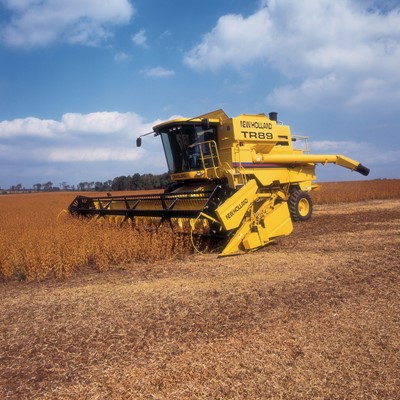The year 2025 marks 50 years since the launch of New Holland’s first Twin Rotor combine, the TR70, in 1975. Since then, the brand’s innovative threshing and separation technology has evolved into a comprehensive product line, now led by the latest CR10 and CR11 models. This milestone will be celebrated globally with special displays at industry events and exhibitions, including those in Africa, where mechanization is playing a crucial role in improving agricultural productivity.
To date, over 70,000 TR and CR Twin Rotor combines have been manufactured worldwide. The company’s Centre of Harvesting Excellence in Zedelgem, Belgium, has undergone significant investment and upgrades to facilitate production of the latest CR models, ensuring they are well-suited for various farming conditions, including the large-scale cereal farming seen in parts of Africa.
New Holland’s Entry into the Combine Market
Initially recognized for its expertise in grassland farming equipment, including balers and forage harvesters, New Holland entered the combine harvester market in 1964 after acquiring Belgian manufacturer Claeys. Claeys had introduced its first self-propelled combine in 1952, and following the acquisition, New Holland continued developing conventional straw-walker combines.
During the 1960s, the company began researching alternative methods for threshing and separation to improve efficiency, grain cleanliness, and reduce losses, leading to the development of the Twin Rotor system. These advancements have been particularly beneficial for regions like Africa, where improving post-harvest grain recovery is critical for food security.
The Birth of Twin Rotor Technology
New Holland engineers explored centrifugal force as a means of grain separation, a concept distinct from the traditional drum-and-concave threshing method. The first prototype, adapted from a Claeys 985 straw-walker combine, was tested in corn in 1968 and wheat the following year. These trials demonstrated that splitting the crop into two streams and processing it through counter-rotating longitudinal rotors significantly improved grain separation while reducing damage and losses. This is particularly relevant for African agriculture, where reducing post-harvest losses can significantly impact food availability and economic stability.
By 1969, a newly designed Twin Rotor combine was undergoing testing, and in 1975, the TR70 was officially launched. Equipped with a 145-horsepower engine and a 5,550-liter (158-bushel) grain tank, it became the first New Holland combine built in the United States. In 1979, the TR75 replaced the TR70, and a larger TR85 was introduced. Over the next two decades, the range expanded, with the 25,000th TR combine rolling off the production line in 1997.
Advancements in High-Capacity Combines
While New Holland’s European engineers had pursued a different high-capacity design with the Twin-Flow combines in 1983, which combined drum-and-concave threshing with rotary separation, the late 1990s saw a renewed global effort to refine Twin Rotor technology.
By 2002, New Holland introduced a new generation of Twin Rotor combines designed for diverse global agricultural conditions, including those in Africa, where increased mechanization can boost large-scale grain production. The 333-horsepower CR960 and 428-horsepower CR980 combined elements of the TR and TF models with new design enhancements. Initially built in the United States, production transitioned to Zedelgem, Belgium, in 2005, where the latest CR10 and CR11 models are now manufactured.
Relevance for African Agriculture
The introduction of Twin Rotor combines has brought significant improvements in harvesting efficiency, particularly in high-yield crop regions. For Africa, where mechanized farming is expanding to meet growing food demand, these combines can help large-scale farmers increase productivity while reducing grain losses. Additionally, New Holland’s continued innovation in fuel efficiency and adaptability ensures that these machines can operate effectively in African climates and soil conditions.
As New Holland celebrates 50 years of Twin Rotor technology, the brand continues to push the boundaries of harvesting innovation, ensuring efficiency and performance for farmers worldwide, including those in Africa who are working to modernize agriculture and enhance food security.


